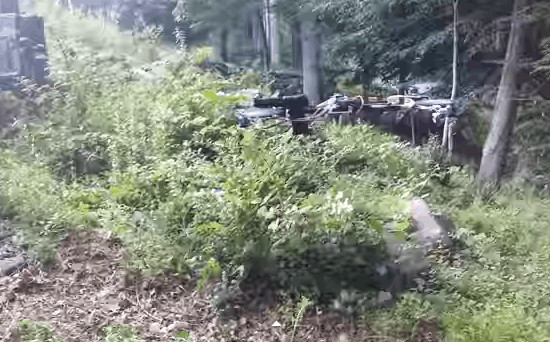NEW YORK — The U.S. Federal Aviation Administration said Tuesday it was investigating an online video that shows an alleged home-made “drone” firing a handgun in the Connecticut countryside.
The 14-second video called “Flying Gun” shows a homemade multi-rotor hovering off the ground, buzzing furiously and firing a semiautomatic handgun four times at an unseen target.
It was posted on YouTube on July 10 and has been watched nearly two million times. It was filmed by 18-year-old Austin Haughwout from Clinton, Connecticut.
Haughwout is studying for a degree in mechanical engineering. Neither he nor police could be reached for immediate comment.
“The FAA will investigate the operation of an unmanned aircraft system in a Connecticut park to determine if any Federal Aviation Regulations were violated,” it said in a statement.
“The FAA will also work with its law enforcement partners to determine if there were any violations of criminal statutes.”
But Haughwout’s father denied his son had built a drone, which he said are pre-programmed. He said this device was manually controlled.
“People have been playing with RC (remote-controlled) toys for many decades,” he told AFP by telephone.
“The proper name for this is an RC quadcopter. The media keeps using the inappropriate word because it helps you to generate fear,” he added.
Haughwout said the FAA had made no contact with his family.
“I don’t understand why people are making such a big deal of it. It’s not like it’s anything new,” he said.
“He’s a mechanical engineering student. He builds all different kind of things.”
Recommended: Drones could help spot illegal fishing around Costa Rica’s Cocos Island
But Peter Sachs, an advocate for the safe and responsible use of drones in civilian life, criticized the venture and insisted the device was “a drone in every sense of the word.”
A gun-firing, civilian drone damaged efforts to promote the safe and responsible use of unmanned aircraft for peaceful recreational, commercial and humanitarian purposes, he said.
“It shows drones in a bad light,” he told AFP.
Sachs, who is also a lawyer, said he would not be surprised if a federal agency took action but said the problem was “finding out which law he may have violated.”
A federal violation against careless and reckless operation of an aircraft was perhaps the only possibility, he said.
Proposed rules have yet to be passed and have not caught up with the advances in technology.
“Drones are a bit ahead of the law at the moment, they don’t fit neatly into any of the existing categories,” said Sachs.
Though the United States was a pioneer in the use of drones — formally called unmanned aerial vehicles or UAVs — on the battlefield, Sachs said the U.S. civilian market was “essentially a third-world nation when it comes to drones.”
The FAA is poised to miss a September deadline for a final set of rules to govern civilian drones in crowded U.S. skies — prompting industry fears that the United States is falling behind other countries in developing high-value UAV technology.
In Switzerland, the postal service has begun testing parcel deliveries by drones. In the Indonesian capital, police deployed drones for the first time this year to monitor traffic.
Online retail giant Amazon, which is a major player in the development of UAVs for civilian missions, wants to introduce delivery by drone less than 30 minutes after an order is placed.
It has insisted on a significant change to the proposed US drone regulations, namely a rule that small UAVs can only be flown in full view of their operators on the ground.
Amazon disagrees with the FAA’s claim that flying drones beyond the line of sight is a major safety concern.






